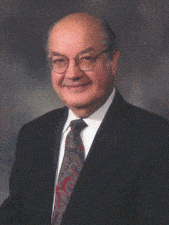
|
The expenditure milestone points that can be ear-marked for system evaluation would occur at about the $1.25-million level (during the Study and Research Phase), after the $5-million point (at the conclusion of the entire Study and Research Phase), at the $11.6-million level (at the end of the Design Phase), at the $15.7-million mark (at the end of the Test Phase), at the $21.7-million level (at the end of the Development Phase), and at the $23.7-million point (at the end of the Final Test Phase). Thus, there are many early opportunities to reevaluate and redirect this program upon discovery of unforeseen difficulties or better alternative approaches. – Paul Baran, On Distributed Communications, Volume XI, 1964. |
Paul Baran invented the field of packet switching networks while conducting research at the historic RAND organization, a concept embedded in the design of the ARPANET and the standard TCP/IP protocol used on the Internet today.
Paul Baran’s packet switching story starts at the Research And Development (RAND) research organization. RAND was founded in Santa Monica, California, soon after the second world war to help maintain the unique system analysis and operations research skills developed by the US military to manage the unprecedented scale of planning and logistics during that global conflict. RAND still maintains a high proportion of research staff with advanced degrees, and provides an extensive research capability capable of tackling a wide range of problems for governments and industry.
In 1959, a young electrical engineer named Paul Baran joined RAND from Hughes Aircraft’s systems group. The US Air Force had recently established one of the first wide area computer networks for the SAGE radar defence system, and had an increasing interest in survivable, wide area communications networks so they could reorganize and respond after a nuclear attack, diminishing the attractiveness of a first strike option by the Soviet Union.
Baran began an investigation into development of survivable communications networks, the results of which were first presented to the Air Force in the summer of 1961 as briefing B-265, then as paper P-2626, and then as a series of eleven comprehensive papers titled On Distributed Communications in 1964.
Baran’s study describes a remarkably detailed architecture for a distributed, survivable, packet switched communications network. The network is designed to withstand almost any degree of destruction to individual components without loss of end-to-end communications. Since each computer could be connected to one or more other computers, Baran assumed that any link of the network could fail at any time, and the network therefore had no central control or administration.
Baran’s architecture was well designed to survive a nuclear conflict, and helped to convince the US Military that wide area digital computer networks were a promising technology. Baran also talked to Bob Taylor and J.C.R. Licklider at the IPTO about his work, since they were also working to build a wide area communications network. Baran’s 1964 series of papers then influenced Roberts and Kleinrock to adopt the technology for development of the ARPANET network a few years later, laying the groundwork that leads to its continued use today by TCP/IP on the Internet today..
In another of those scientific synchronicities, Baran’s packet switching work was strikingly similar to the work performed independently a few years later by Donald Davies at the National Physical Laboratory, including common details like a packet size of 1024 bits. This idea was almost waiting to be discovered.
Baran later left RAND to become an entrepreneur and private investor in the early 1970’s, and founded Metricom, co-founded Com21.com, and co-founded the Institute for the Future.
Paul Baran has also received numerous awards, including the IEEE Alexander Graham Bell Medal, and the Marconi International Fellowship Award.